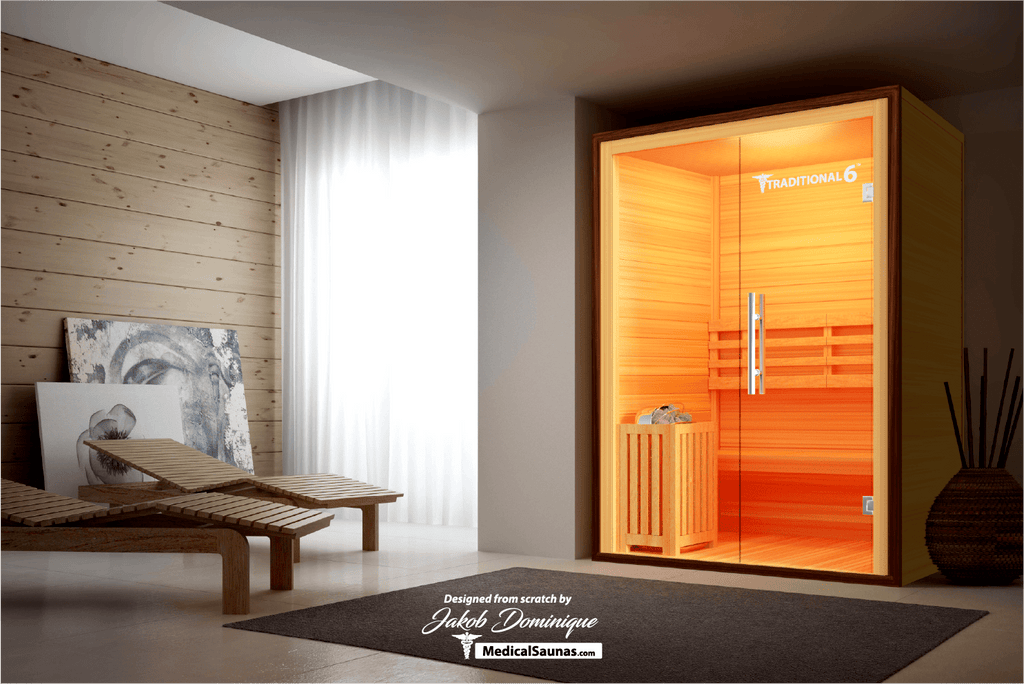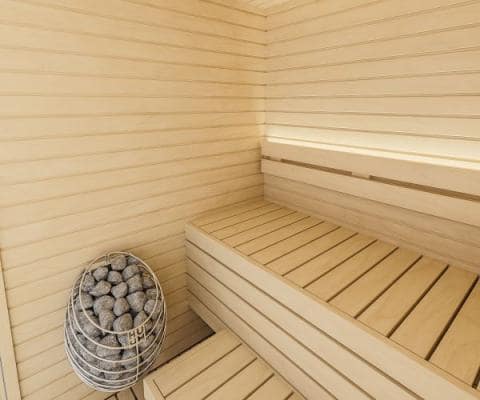Getting The Traditional Sauna To Work
Getting The Traditional Sauna To Work
Blog Article
The Buzz on Traditional Sauna
Table of ContentsSome Ideas on Traditional Sauna You Need To Know10 Easy Facts About Traditional Sauna DescribedA Biased View of Traditional SaunaTop Guidelines Of Traditional SaunaTraditional Sauna - The Facts
A lot of the weight lost in a sauna is water loss and is re-gained upon rehydrating. However, undeniably sauna can be a fundamental part of a healthy and balanced weight reduction program. To consider the differences between traditional and IR saunas, I will separate these right into verifiable, academic, and fabricated distinctions.Thus, the most popular point in the saunawhich is at the ceiling directly over the sauna heateris generally in between 185 and 190 F. Claims that a conventional sauna goes beyond 200 F is simply not true and not relevant for electric saunas sold in the US. The temperature for a far-infrared sauna is normally set between 120 and 140 F; nevertheless, unlike the typical sauna, the goal in and IR space is not to achieve a high temperature.

When a traditional sauna has been effectively heated, the sauna wall surfaces are cozy, the air temperature has actually achieved set temperature and the rocks are super warmed. As an interesting side note, the warmed walls and the rocks are giving off far-infrared warm, combined with the heated air, to develop an "enveloping warm".
The Main Principles Of Traditional Sauna
When the heat is attained, the components cycle on and off to preserve the heat. The majority of traditional sauna customers enjoy pouring water over the rocks to produce heavy steam to elevate sauna moisture degrees. The benefits of putting water over the rocks consist of: making the area much more comfortable, moistening the nasal passages, and allowing the use of aromatherapy by mixing necessary oils with the water.

When the energy goes into the body, it creates the body temperature level to increase and ultimately results in sweating. In an infrared sauna it's essential for the emitters/heaters to continue to be on virtually frequently. Since there is no mass of rocks to maintain warm, the sauna will cool down if the emitters turned off.
A Biased View of Traditional Sauna
As discussed over, the sauna bather in an infrared room intends to place himself before operating emitters to obtain optimal benefit from the heat. The home heating time for the two areas can be extremely different, relying on just how the spaces are utilized. For a traditional sauna, a bather should permit 30-40 minutes for the space to accomplish a desired temperature and to properly pre-heat the rocks.

A well created sauna will normally attain a temperature level of 150-160 F in about 30-40 mins. For hotter temperatures, the area might need to warmth for a longer duration.
To some, 15 minutes was "squandered" while the infrared energy heated up the timber panels as opposed to warming a body, while others find a pre-heated area to be a lot more comfortable and believe read review a raised starting temperature is required to begin sweating. The size of recommended usage for every space is around the very same (10-15 mins per session); however, as a result of the lower air temperature levels and the capability to feel the results of infrared warmth much faster than a typical sauna, it is not unusual for a person to spend a total of 20-30 minutes in an infrared sauna.
Unknown Facts About Traditional Sauna

The typical cost per kWH of electrical energy in the united state is around $0.11, so a 4.5 kW heating unit will set you back roughly $.50 to run for one hour, if the heating unit runs continuously for one hour. Usually a sauna heating system will certainly compete 75% of the initial hour and 50% of subsequent hours on given that the aspects cycle once check out here the established temperature level is accomplished.
A 2 person far-infrared space is normally literally smaller than a typical sauna, commonly concerning 4' x 4' or smaller. The IR heater is typically 1.5-1.7 kW utilizing a 120 volt 15 amp plug-in service. Considering that the area can be used earlier than a sauna room, we will certainly think the space is utilized for to of an hour consisting of heat up time.
Lastly, there is a hardly ever discussed distinction in the social experience between both areas. While our culture has actually lost a few of the social benefit of the traditional sauna experience, it can be extremely socially rewarding (Traditional Sauna). From family members time in the sauna, to heart-felt conversations with substantial others, to sauna partiesthe traditional sauna experience can lead to intimate socializing
3 Simple Techniques For Traditional Sauna
Many greater end infrared rooms consist of tinted light therapy, sound systems and full-glass fronts.
Report this page